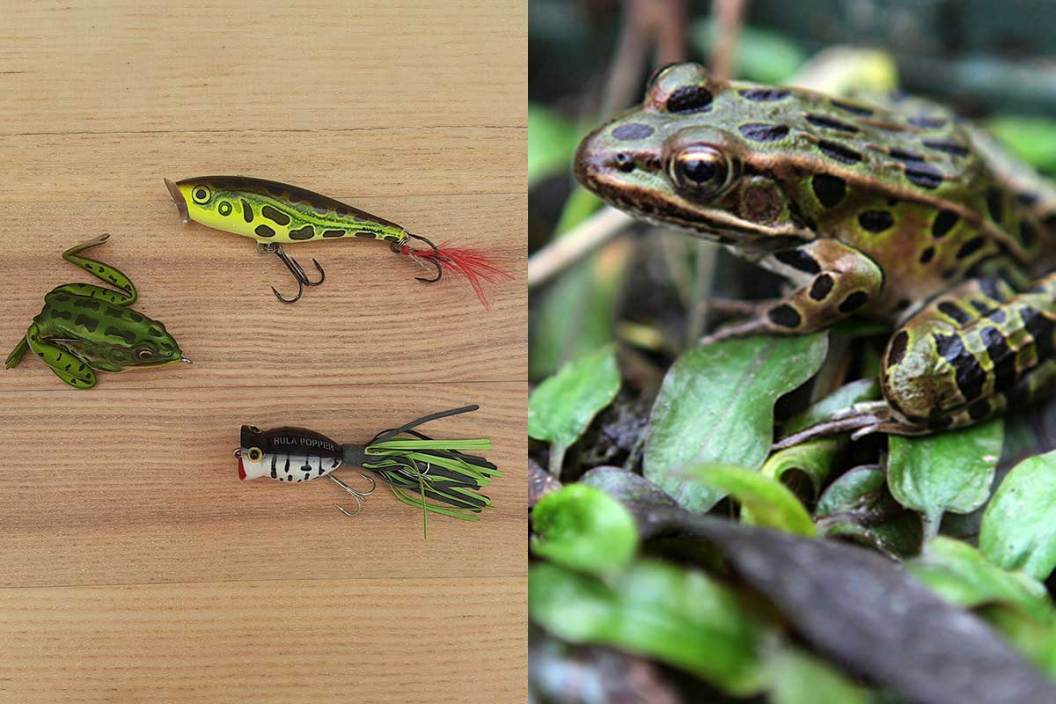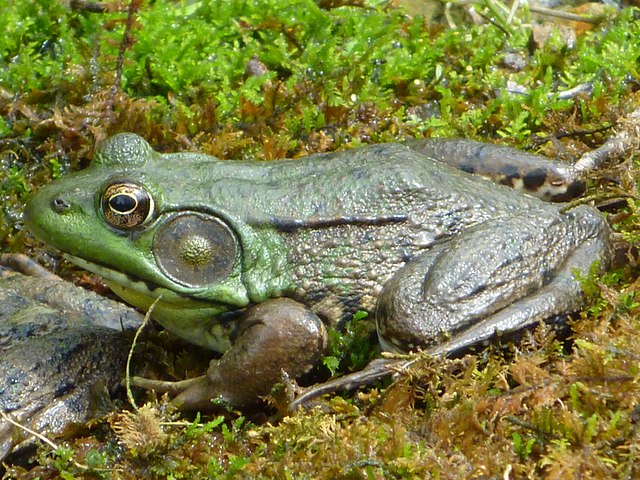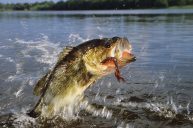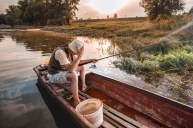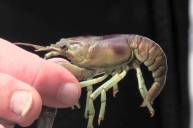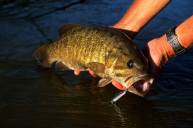There's a reason why entire sections of tackle boxes and bags are dedicated solely to frog baits. It's because frogs and bass go together like pork and beans. Sometimes things are just that simple, and in the world of bass angling, the diminutive amphibian known as the frog must taste the way Angus steak tastes to us because bass devour them. If we get down to brass tacks, there are times we can toss frog baits in the water column and if a largemouth bass sees it, it's toast. With the frog species, this can happen underwater but it's mostly with topwater baits, but bucket mouth bass prowl both areas with equal enthusiasm. With over 100 different species of frog dwelling in North America, you might think there are endless possibilities to getting a big bass's attention, but a few stand out. Honestly, the ones that we use the most have a similarity to the frogs that are natural to our area. That's going to vary depending on where and when you fish. But I've fished enough in plenty of places to know that as long as they have frog-like features and perform well, you can use them almost anywhere. Here are five species of frogs worth knowing about, and pointers on how to fish with frog baits if they're around.
1. Mink Frog
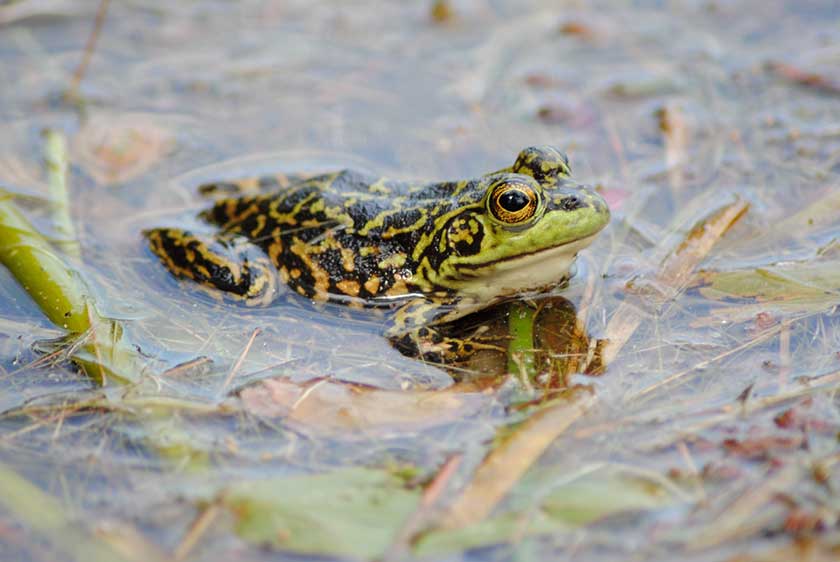
flickr user Mike Ostrowski via CC BY-SA 2.0
The mink frog is blotchy green and brown with a pale underside and bright green lips. It has the same tenacity for lily pads as most frogs and uses these for basking in the sun, feeding, and as shelter from predators. They prefer the quieter waters of ponds and lakes, and can be found in river basins as well. If you know mink frogs inhabit the spot you're fishing, cast towards pads and grasses, or at least near the banks, and be ready with a strong rod and heavy duty reel. It's said that the "mink" name comes from the fact that they tend to smell like a mink when handled, but to find out, you would have to put it up to your nose. I'll let you go first.
2. Pickerel Frog
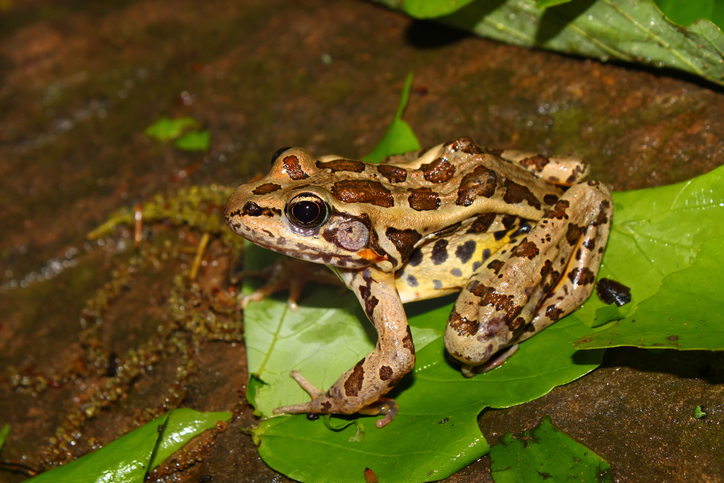
Pickerel frogs are medium-sized and have two parallel rows of square or rectangular spots down its back with a wide ridge of skin on each side. Their coloring is more gray, tan, or brown than is typical for frogs, with prominent bars on their back legs. It's easy to find varieties of frog baits that mimic those colorations. If bass feed on the pickerel frog in your honey hole, try a bait that gets close to their colors and has erratic topwater action with a lot of surface disturbance. That will get the attention of those big bass.
3. Green Frog
The sound of the green frog calling from the reeds is possibly one of the most familiar and happy sounds we love in nature. They look similar to their larger cousins, the bullfrog, but are generally smaller and quicker. Nonetheless, you can use a bait that's a little larger if you're in green frog territory, and you only get one guess as to the main color to choose. It can actually vary in color from green to tan to brown, with the adult males having a bright yellow throat patch. As you can imagine, the green frog lives near the water in reeds, marshes, creek bottoms, sloughs, and farm ponds.
4. Southern Leopard Frog
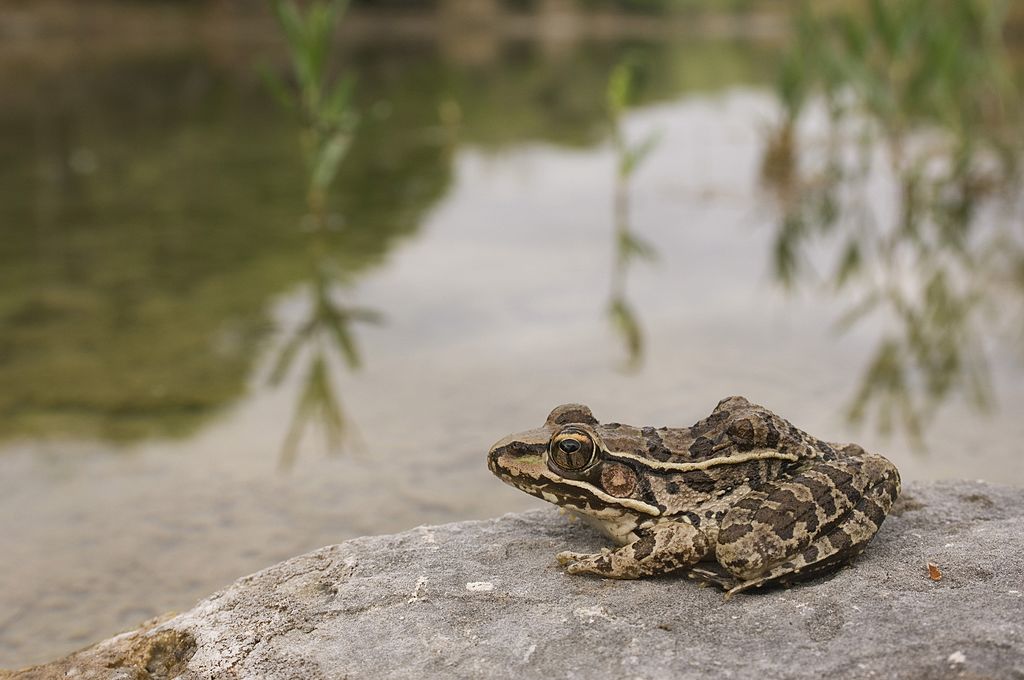
Wolfgang Kaehler/LightRocket via Getty Images
Don't let the name fool you since the southern leopard frog can be found in some northern-tier states, such as Missouri. It's a small-to-medium-sized amphibian with rounded leopard-like spots and stripes as markings. The two ridges along the sides of the back are narrow, distinctly raised, and run the full-length. Southern leopards inhabit a variety of wetlands and waterways but can sometimes be found far from water in their search for food. If you're fishing in a place where southern leopard frogs are prevalent, know that they're most active at dawn and dusk, and especially during rainfall.
5. Northern Leopard Frog
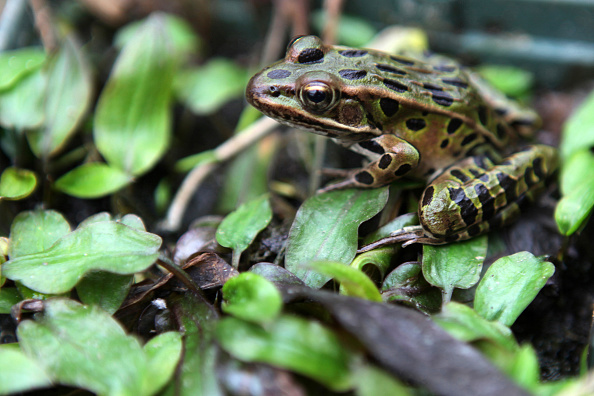
Creative Touch Imaging Ltd./NurPhoto via Getty Images
While similar to the other frogs listed here, the northern leopard frog may still be the most recognizable. It resembles virtually every single frog imitation lure out there for a reason and it keeps on giving. The northern leopard frog is usually green but can be brown or green in color with large, rounded black spots. It is active from March until October in and around the water but loves finding grassy areas in the summer to find and eat bugs of all kinds.
The Frog as Bass Bait
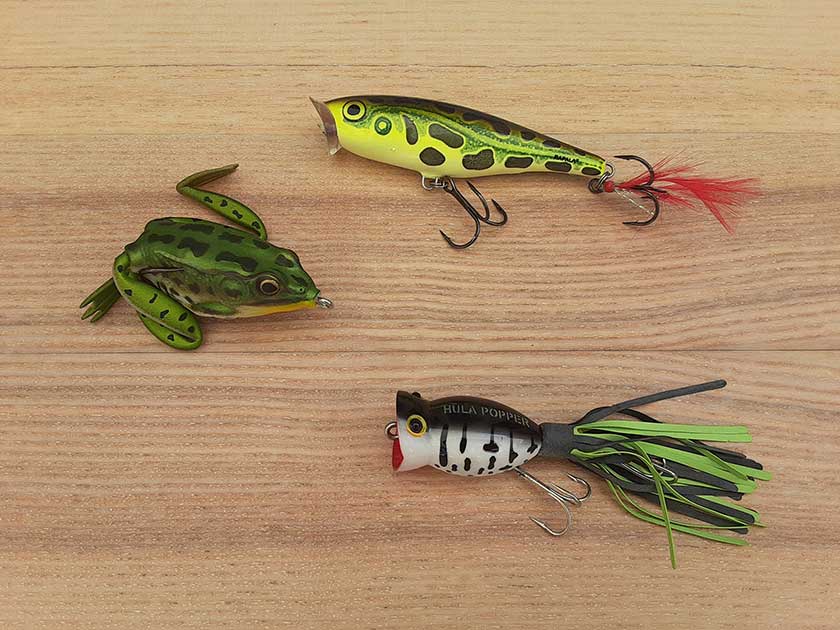
Finding information on using frog imitations is like finding popcorn on the floor of a movie theater: it's everywhere. But not every tip coincides with the frog species, and it can certainly help to apply that knowledge. If you're using bass baits, you're going to need a good rig, such as a 6'6" casting medium heavy to heavy setup with some good quality 15-pound test fluorocarbon or smaller diameter braided line.
Just know that these five frog species are on the menu for bass, along with many others, and it can be a truly magnificent way to catch big lunkers if you do it right.
Please check out my book "The Hunter's Way" from HarperCollins. Be sure to follow my webpage, or on Facebook and YouTube.
